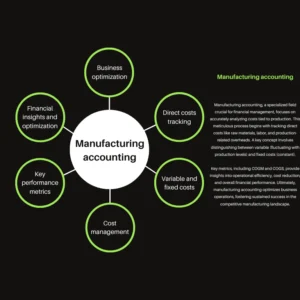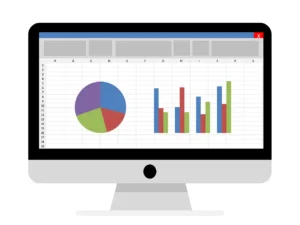What is the current ratio?
The ratio is a financial metric used to evaluate a company’s short-term liquidity and ability to meet its immediate financial obligations. It is calculated by dividing a company’s current assets by its current liabilities. Current assets include cash, accounts receivable, and other assets expected to be converted into cash within a year, while current liabilities encompass debts and obligations due within the same period.
A ratio greater than 1 indicates that a company possesses more current assets than current liabilities, implying a relatively strong liquidity position. Conversely, a ratio less than 1 suggests potential difficulties in meeting short-term obligations.
Investors, creditors, and analysts commonly utilize the ratio as a quick gauge of a company’s financial health and its capacity to manage financial risks. However, it is crucial to consider industry norms and the company’s specific circumstances for a comprehensive assessment of its overall financial position.
| Current Assets | Current Liabilities |
|---|---|
| Cash and Cash Equivalents | Accounts Payable |
| Accounts Receivable | Short-term Debt |
| Inventory | Notes Payable (due within a year) |
| Prepaid Expenses | Accrued Liabilities |
| Short-term Investments | Current Portion of Long-term Debt |
| Marketable Securities | Income Taxes Payable |
| Petty Cash | Unearned Revenue |
| Other Short-term Receivables | Bank Overdrafts |
| Temporary Investments | Current Maturities of Obligations under Capital Leases |
Current ratio formula
Current Ratio = Current Assets / Current Liabilities
The formula divides the total value of current assets by the total value of current liabilities to determine the current ratio, which provides insight into a company’s ability to cover short-term financial obligations with readily available assets. Resulting ratios provide insight into a company’s short-term liquidity.
For example, if a company has $200,000 in current assets and $100,000 in current liabilities, the current ratio would be:
Current Ratio = $200,000 / $100,000 = 2
With a current ratio of 2, the company has twice as many current assets as current liabilities, indicating that it is in a relatively favorable position to meet its short-term obligations.
How to calculate the current ratio
To calculate the current ratio, divide a company’s total current assets by its total current liabilities.
The formula is Current Ratio = Current Assets / Current Liabilities.
The resulting ratio indicates the company’s ability to meet short-term obligations with its available resources.
What is a good current ratio
A good current ratio typically falls between 1.5 and 3.0. A ratio above 1 suggests a company has sufficient current assets to cover its short-term liabilities, indicating a healthy liquidity position.
Ratios closer to 1 may raise concerns about the company’s ability to meet immediate financial obligations. On the other hand, excessively high ratios may indicate an inefficient use of resources or an overly conservative approach.
However, the ideal current ratio can vary depending on the industry and business model, so it is essential to compare a company’s ratio with its peers and consider other financial indicators for a comprehensive assessment of its financial health.
Interpreting current ratio
It is a vital tool in assessing a company’s short-term financial health and liquidity. When the ratio is above 1, it indicates that a company has sufficient current assets to cover its current liabilities, suggesting a favorable position to meet its short-term obligations. Ratios significantly above 1 may signify excess liquidity, potentially underutilizing resources.

Conversely, a ratio below 1 raises concerns about the company’s ability to pay off its immediate debts. A comprehensive analysis of the company’s financial position and performance requires comparing the current ratio with industry benchmarks, historical data, and other financial metrics.
A practical example of interpreting the current ratio
Let’s consider a practical example of a manufacturing company, ABC Electronics. In its latest financial statement, ABC Electronics reports current assets of $500,000, including cash, inventory, and accounts receivable, while its current liabilities stand at $300,000, encompassing accounts payable and short-term debt.
By applying the current ratio formula: Current Ratio = Current Assets / Current Liabilities.
Current Ratio = $500,000 / $300,000 = 1.67
With the ratio of 1.67, ABC Electronics seems to have a healthy liquidity position. It indicates that the company has $1.67 of current assets for every $1 of current liabilities, suggesting it can comfortably cover its short-term obligations.
However, to gain a more comprehensive perspective, the company should compare this ratio to industry peers and historical data. If ABC Electronics’ current ratio is significantly higher or lower than industry norms, further analysis may be required to identify the underlying reasons and assess the company’s overall financial health.
Current ratio vs Quick ratio
| Aspect | Current Ratio | Quick Ratio (Acid-Test Ratio) |
|---|---|---|
| Definition | Current Assets / Current Liabilities | (Current Assets – Inventory) / Current Liabilities |
| Components | Includes all current assets | Excludes inventory from current assets |
| Purpose | Measures short-term liquidity | Assesses immediate liquidity without relying on slow-moving assets like inventory |
| Coverage of Liabilities | Includes all current liabilities | Includes all current liabilities |
| Stringency | Less stringent indicator | More stringent indicator for liquidity |
| Usefulness | Provides a broader view of liquidity | Provides a more conservative view of liquidity |
| Industry Preference | Preferred in industries with steady inventory turnover | Preferred in industries with slow inventory turnover or perishable goods |
| Benchmark | Ideal ratio above 1.0. Subjected to industry standard | Ideal ratio above 1.0. Subjected to industry standard |
Advantages of the current ratio
Liquidity Assessment:
It provides a quick and straightforward measure of a company’s short-term liquidity. It helps stakeholders, such as investors and creditors, gauge the company’s ability to meet immediate financial obligations.
Comparability:
The ratio is easily comparable across different companies and industries. It allows investors to assess the relative liquidity positions of various businesses, aiding in investment and risk assessment.
Early Warning Signal:
A declining ratio over time can serve as an early warning signal of potential liquidity problems. It prompts management to take corrective actions before the situation becomes critical.
Financial Health Indicator:
A healthy ratio reflects a well-managed balance between current assets and liabilities, indicating the company’s sound financial health and effective working capital management.
Strategic Decision-Making:
Companies can use the current ratio to inform strategic decisions regarding inventory levels, credit policies, and short-term financing requirements.
The basis for Further Analysis:
While the ratio is a useful snapshot of liquidity, it can also serve as a basis for in-depth financial analysis, prompting investigations into underlying operational and financial factors affecting the ratio.
Limitations of the current ratio
Ignores Asset Quality:
The ratio treats all current assets equally, disregarding the quality and convertibility of assets into cash. Some current assets may be slow-moving or difficult to liquidate quickly.
Excludes Long-term Aspects:
It focuses solely on short-term liquidity, overlooking a company’s long-term financial health and ability to meet obligations beyond the next year.
Industry Differences:
Different industries have varying working capital requirements. Comparing the current ratio across industries may lead to misleading conclusions.
Seasonal Variations:
Seasonal businesses may experience fluctuations in current assets and liabilities, causing distortions in the ratio’s interpretation.
Debt Structure:
The ratio does not consider the maturity and interest costs of current liabilities, which can impact a company’s financial risk.
Manipulation Possibility:
Companies may manipulate current assets or liabilities temporarily to improve the current ratio, obscuring the true financial position.





[…] Managing this cycle efficiently is crucial as it affects a company’s cash flow, liquidity, and overall financial health. A shorter working capital cycle allows for better cash management and increased operational agility. Working capital health can be determined by a company’s current ratio. […]